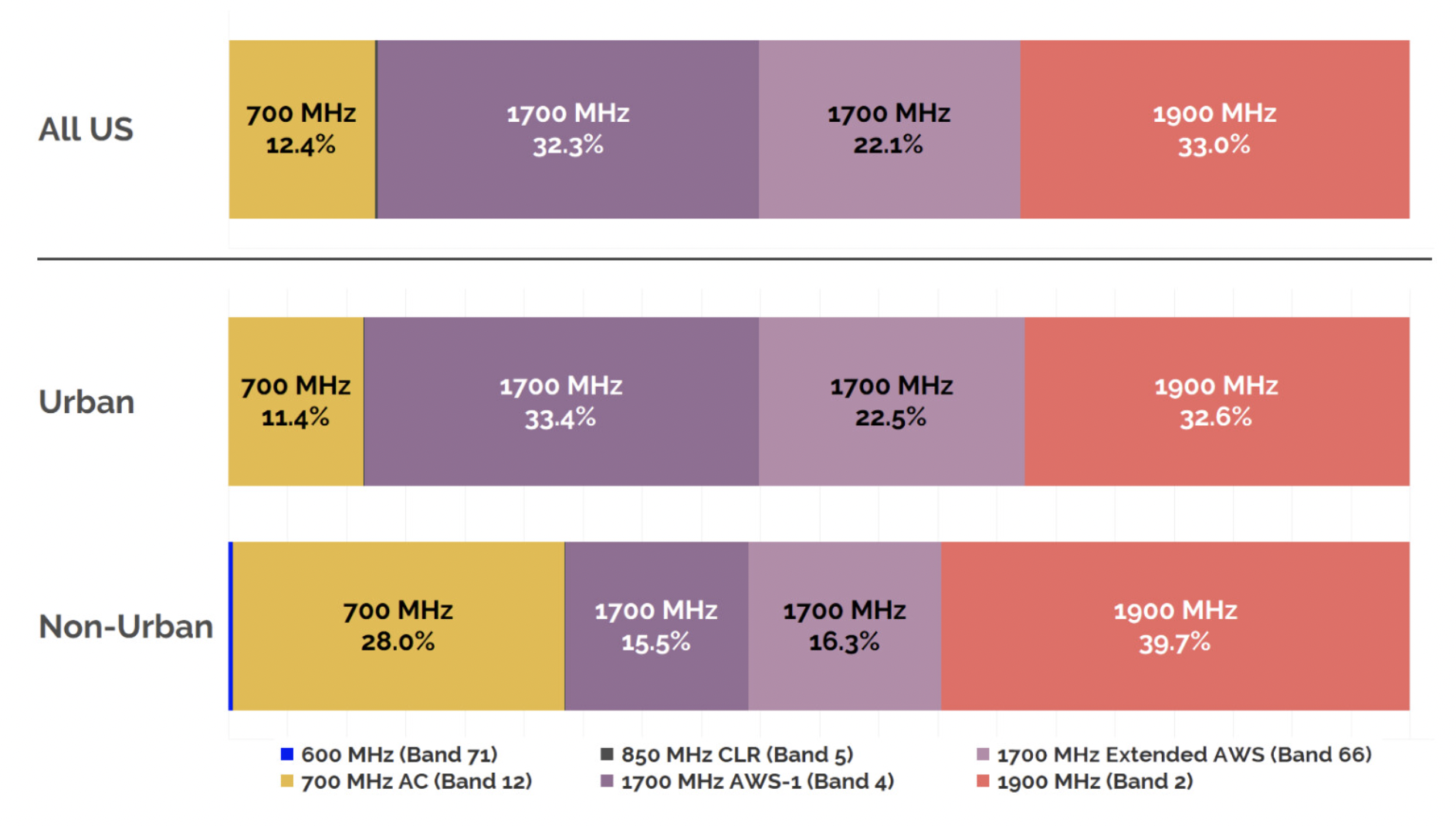The 3GPP B7 (2600 MHz) LTE band is the third most common band used by general populace mobile operators for LTE network implementations, and it is typically implemented due to the widespread availability of spectrum and its short range, which allows for dense deployment for max capability.
What precisely is the LTE Carrier Combination?
Mobile carrier bands are sequentially numbered and represent “blocks” of a frequency spectrum. A band can be shared by multiple carriers or assigned to a single cellular carrier.
T-Mobile, for example, controls the majority of the LTE band 71 frequency in the United States.
T-Mobile and Dish Network control the majority of band B71.
Verizon, which owns nearly all of B13 nationwide, is an example of a single carrier on a single band.
LTE Band 7 Features
Multi Band Network
With reportedly over 157 major channels in 74 countries and regions, mobile network operators have the versatility to implement LTE using band 7 as a single band or as part of a multi-band network (April 2018). LTE-A or LTE-Advanced Pro techniques can be used to combine different bandwidth capacity of band 7 with other carriers via cellular systems.
Suitable for Business Needs
LTE bands are critical components of mobile phone and mobile device features, and they govern how operators provide service to the customers. Understanding the LTE bands is critical for two reasons. To begin, the data transfer and operational costs associated with operating on a specific band are critical components of any business strategy. Second, understanding LTE frequency bands will help you determine which network – and the various devices that can operate on that network – is best suited to your business needs.
Short Transmitting Time
One of the primary goals of LTE band 7 is to provide as short a transmitting time as possible, as well as high throughput (the quantity of data to be transferred), low latency (the time between sending and receiving data), and security. Telecommunication facilities with these fundamental elements are typically made up of a base station (a radio receiver or transceiver that can also act as an entry point between wireless connections) linked to a network infrastructure.
Use of Radio Waves
The LTE band 7 transmits data via radio waves. Radio waves can range in length from one millimetre to over 100 kilometres and have a variety of frequencies. The frequency of a wave is measured in Hertz (Hz) and represents the number of complete cycles it performs per second. LTE Band 7 is a frequency division duplex (FDD) LTE spectrum with distinct uplink and downlink frequencies. The uplink and downlink bands are separate, allowing for simultaneous transmission on two frequencies. The bands are separated by an area known as the band gap.
What Are the Products Famous for LTE Band 7?
Most smart device today support LET network. One of the most prominent devices is the newly launched Huawei band 7. Huawei Band 7 features new and improved tracking systems for sleep, blood oxygen level tracking, menstrual detection, heart rate monitoring, and other activities.
Huawei Band 7 is popular for 4G LTE networks. In particular, the TruSleep 2.0 feature allows you to track various types of sleep problems without disturbing users’ sleep and can precisely enable tracking once users fall asleep.
Huawei Band 7 with NFC supports a variety of transportation capabilities, including a bus card system. It is widely used throughout the world. Many users have chosen LTE Band 7 as their fitness tracker. And there are now many 4G LTE USB Dongles, 4G LTE CPEs for band 7, as well as 4G LTE Mobile access points and 4G LTE Modules for band 7.
Conclusion
Band 7 is an LTE frequency operating band and Huawei Band 7 is the current version in the company’s popular line of low-cost fitness bands. It is a minor improvement over the previous-generation Huawei Band 6. Huawei’s latest smart band retains the look and design of its forerunner while weighing only 16 grams. AMOLED screens have thin bezels (Always on Display). It features Huawei’s Tru Series technology, as well as 96 sports modes and a battery life of two weeks.
